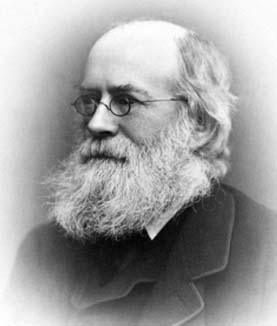Samuel Roberts (mathematician) facts for kids
Samuel Roberts (born December 15, 1827, in Horncastle, Lincolnshire – died September 18, 1913, in London) was an important British mathematician. He was known for his work in different areas of math, even though he never worked as a professor at a university. He was also a key person in starting the London Mathematical Society.
Contents
Early Life and Education
Samuel Roberts grew up in Horncastle, a town in England. He went to Queen Elizabeth's Grammar School, Horncastle for his early education. He was a very bright student.
In 1845, Samuel started studying at the University of London. He focused on mathematics, which he loved. By 1847, he earned his first university degree in mathematics. He continued his studies and, in 1849, he received a higher degree in both mathematics and physics. He was the top student in his class, showing how talented he was.
From Law to Mathematics
After finishing his math and physics degrees, Samuel Roberts decided to study law. In 1853, he became a solicitor, which is a type of lawyer. He worked as a lawyer for a few years.
However, Samuel's true passion was mathematics. After some time, he decided to leave his law career. He wanted to focus entirely on math. Even though he never became a university professor, he continued to do advanced mathematical research and publish his findings. His first math paper was published in 1848, even before he became a lawyer.
Leading the London Mathematical Society
Samuel Roberts played a very important role in the world of mathematics in London. In 1865, he was a key person in creating the London Mathematical Society (LMS). This society was, and still is, a major organization for mathematicians in the United Kingdom.
He held several important positions within the LMS. From 1866 to 1892, he worked as the society's legal advisor. He also served as its treasurer, managing the money, from 1872 to 1880. Later, from 1880 to 1882, he was elected as the president of the society. This shows how much his fellow mathematicians respected him. In 1896, he received the De Morgan Medal, which is a very high honor from the LMS for outstanding contributions to mathematics.
Important Mathematical Discoveries
Samuel Roberts published many papers on different math topics. His work covered areas like geometry, which is the study of shapes and spaces. He also worked on interpolation theory, which is about finding new data points within a known range of data points. Another area he explored was Diophantine equations, which are special equations where you only look for whole number solutions.
The Roberts-Chebyshev Theorem
One of his famous contributions is the Roberts-Chebyshev theorem. He developed this theorem with another mathematician named Pafnuty Chebyshev. This theorem is about something called "four-bar linkages." Imagine a machine with four bars connected together, like parts of an engine or a robot arm. This theorem helps understand how these linkages move and can be used to design them.
Roberts's Triangle Theorem
Another theorem named after him is Roberts's triangle theorem. This theorem deals with the minimum number of triangles that can be formed by a certain number of lines. For example, if you draw a few straight lines on a piece of paper, how many triangles can they create at least? Samuel Roberts published this theorem in 1889.
Recognition and Legacy
In 1878, Samuel Roberts was elected a Fellow of the Royal Society (FRS). This is a very prestigious honor for scientists in the United Kingdom, recognizing their significant achievements. Samuel Roberts's dedication to mathematics, even without a formal academic job, and his important work with the London Mathematical Society left a lasting impact on the field.


